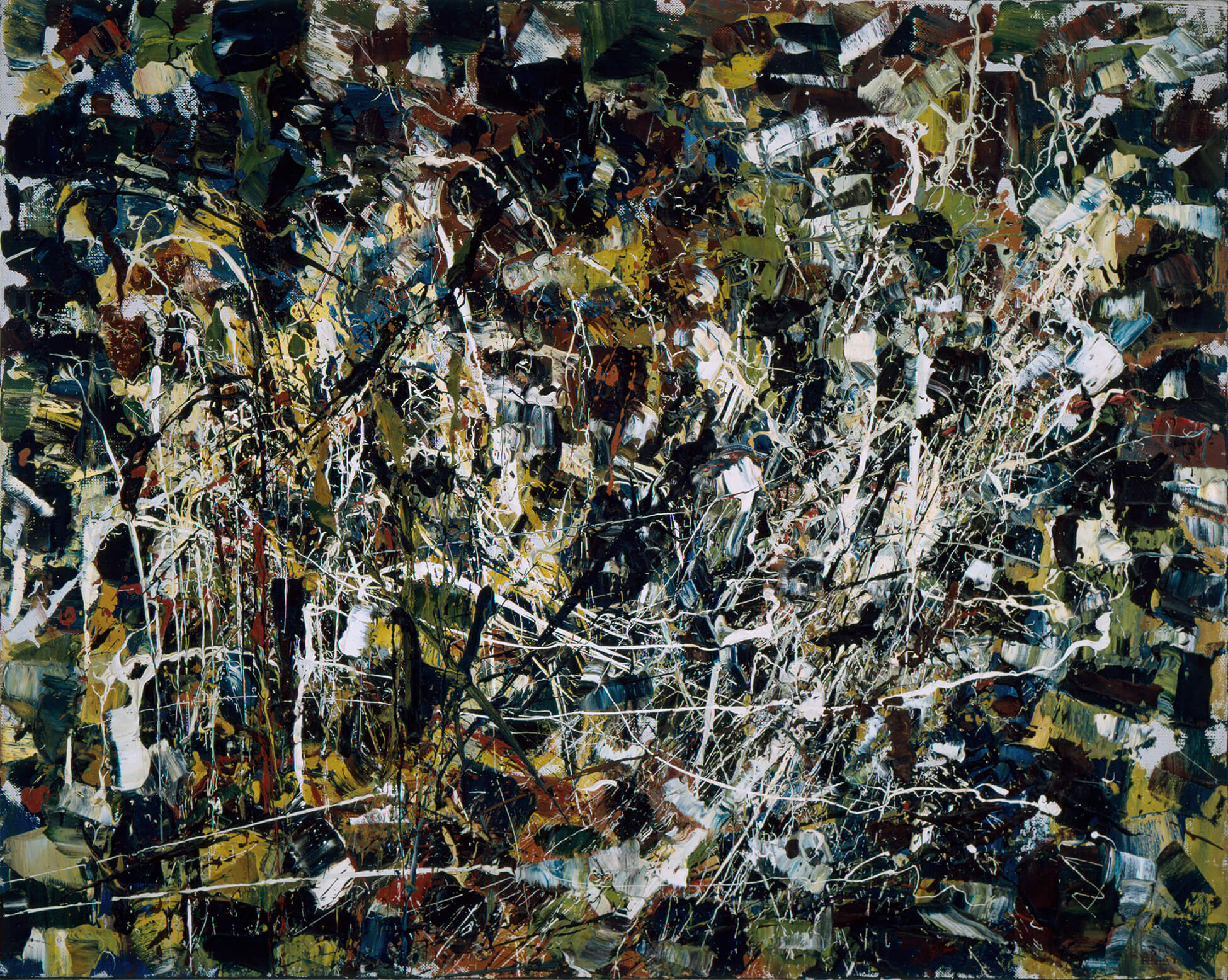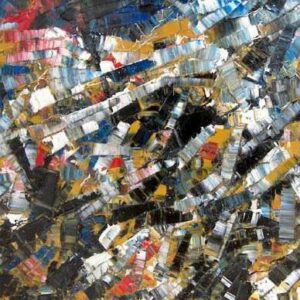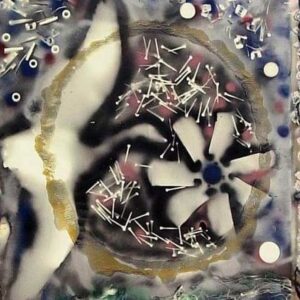Untitled (Stroll), 1949

Jean Paul Riopelle, Untitled (Stroll) (Sans titre [Promenade]), 1949
Oil on canvas, 81.1 x 100.1 cm
© Jean Paul Riopelle Estate / SOCAN (2019)
Musée d’art contemporain de Montréal
In 1949 Jean Paul Riopelle abandoned the brush for the palette knife and began creating what would become his most iconic works of art. He called his preferred utensil a couteau (French for “knife”), most likely influenced by the English term. Nonetheless, in this work there may be a few remaining traces of brush strokes where the arrangement of painterly elements has been compared to the tesserae of ancient mosaics. It is not a completely satisfactory comparison, because mosaics, whether figurative or decorative, follow a preconceived plan and generally a preparatory drawing. Under the influence of automatism and the French avant-garde, Riopelle painted directly on his canvas with neither a pre-established idea, drawing, or study. The piece was composed, so to speak, before his eyes and according to no program. This was the central tenet of the style: to proceed into an art without knowing and to arrive at a place unknown as a result.

There is one oddity that deserves our attention in Untitled (Stroll)—an abundance of white and black filaments that streak across the surface of the piece. As he did in his watercolours of the same period, such as Untitled (Composition, 1947) (Sans titre [Composition, 1947]), 1947, Riopelle here creates a network of coloured spots and then connects them with lines of what look to be paint thrown across the canvas. This effect was achieved by a flick of the wrist, using the end of a stick dipped in paint. Therefore, while Untitled (Stroll) appears similar to the famed drip paintings of the American painter Jackson Pollock (1912–1956), it should not be forgotten that the canvas on which Riopelle worked was placed vertically on an easel while Pollock’s canvases were set down on the floor. Despite this work’s similarity to paintings by the master of American Abstract Expressionism, Riopelle’s lines could not have been made by dripping paint. These are the loose marks of the automatist, engaged with the moment, yet contained by the millennia-old tradition of easel painting.
Many of Riopelle’s signature works from 1949 and the early 1950s appear to direct the eye using lines. In Untitled (Stroll), the eye slides across the surface of the painting, predominantly to the right, but also, to a lesser extent, to the left, where the lines form a kind of irregular V near the middle of the canvas. By directing the viewer’s gaze, these lines introduce movement into the painting—indicating how the work might be read or navigated. Perhaps the title of this piece suggests then the “stroll” that the painting invites the eye to take or even the stroll artists take as they navigate their way through and into the canvas.

 About the Author
About the Author
 More Online Art Books
More Online Art Books
 Acknowledgements
Acknowledgements